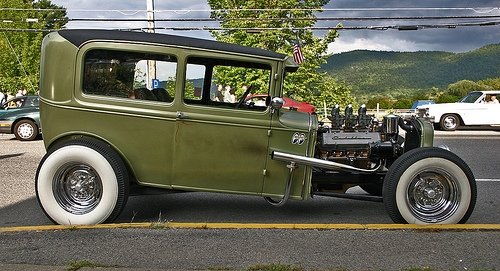
Originally known as Per-Lux in 1962, Pertronix ignitions has always been on the cusp of electronic automotive conversions. Enduring its fair share of birthing pains through the early years, Pertronix came into its own in the early 70s with the introduction of Ignitor Conversion Kits. These kits allowed users to replace their car's weak, unreliable point-and-condenser ignitions with modern electronic components, helping to usher in a new era for performance and automotive design world-wide.
The Ignitor system replaces the distributor's internal trigger and voltage regulation system with a magnetic Hall effect sensor and electronic modulator. The advantages of this system are its lack of moving parts and subsequent reliability, as well as its ability to independently control timing and dwell (the amount of time the coil spends discharging onto individual plug wires). This type of system is very similar to GM's HEI distributor, but retains the distributor's stock outward appearance.
After retro-fitting an Ignitor to their stock points system, some owners have come to the mistaken conclusion that it doesn't work. Shortly after installation, the engine would begin to buck and misfire, leading to a flurry of cursing and hours of frustration, followed by eventual re-installation of the stock points. It was actually some time before engineers discovered why this retrofit worked on some engines and died ingloriously on others.
Since the Pertronix was created to deliver a large amount of voltage in a short period of time, it does not require the dwell time of older systems. As such, it can sometimes cause overheating of the stock ignition coil, which was not designed to discharge so quickly. It is the coil's inability to transfer power rapidly enough that leads to overheating and subsequent malfunction.
If you're sure the stock coil will work with the Ignitor, check your connections. In order to discharge as quickly as possible, the coil may require a better ground (negative battery connection) than it had stock, so clean and corrosion-free contacts are a must. If your contacts are fine, consider running a heavy-duty ground cable straight from the coil-mount to the negative terminal on your battery.
Once you get tired of fiddling with your 40-year-old ignition coil, you'll more than likely decide to replace it. Pertronix offers a number of stock-appearing coils for the occasion, but practically any modern canister-type coil will do the job. A stock 1980 Ford F-150 coil will work, but you might want to consider spending the extra $30 for a high-performance aftermarket unit. If you're concerned about stock appearance, a $2 can of black spray paint should see to your needs. Prices are as of 2009.